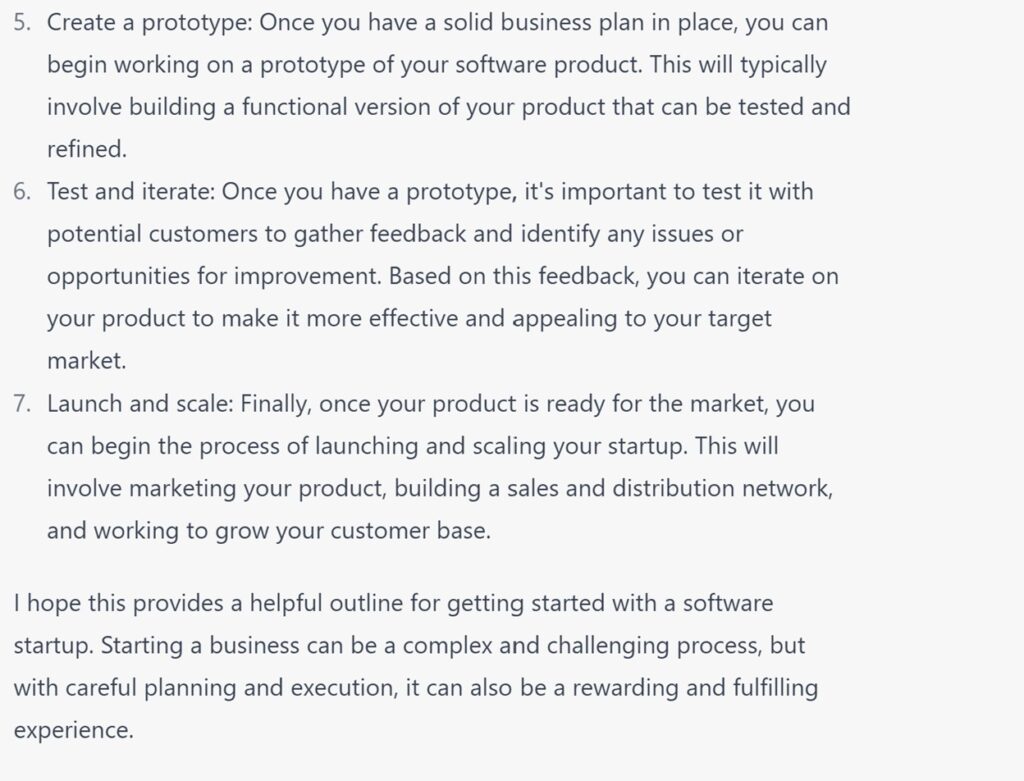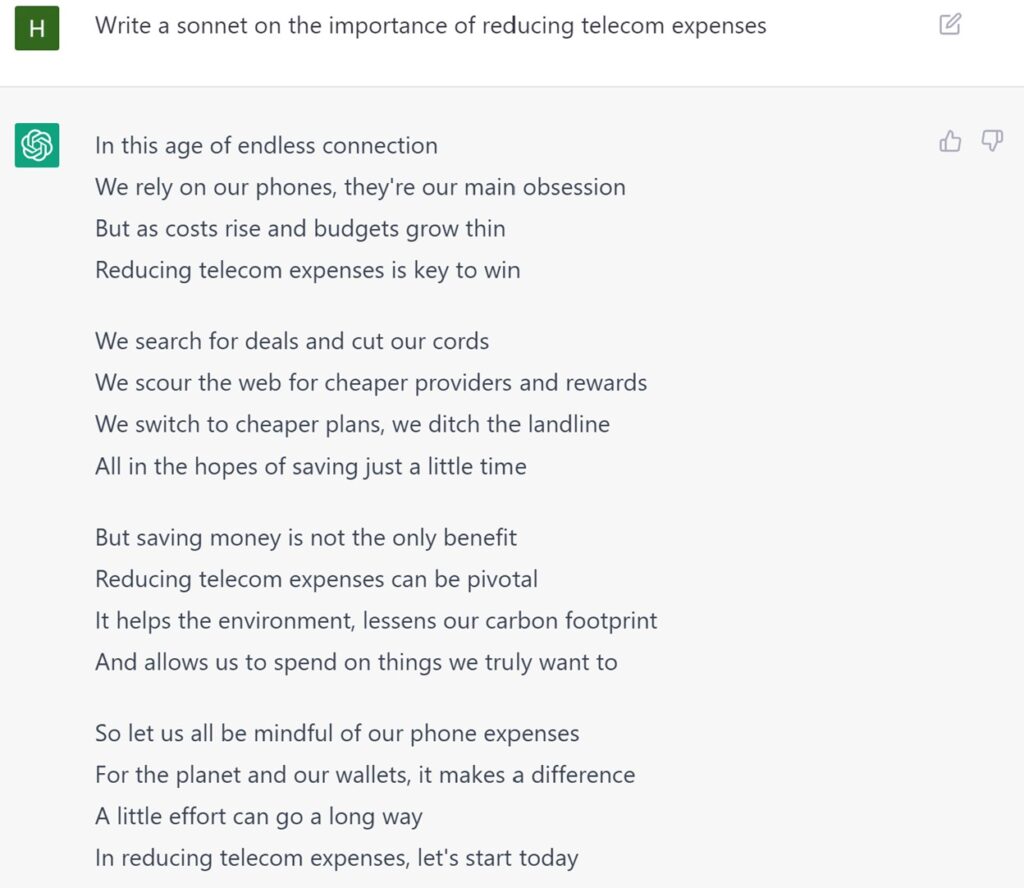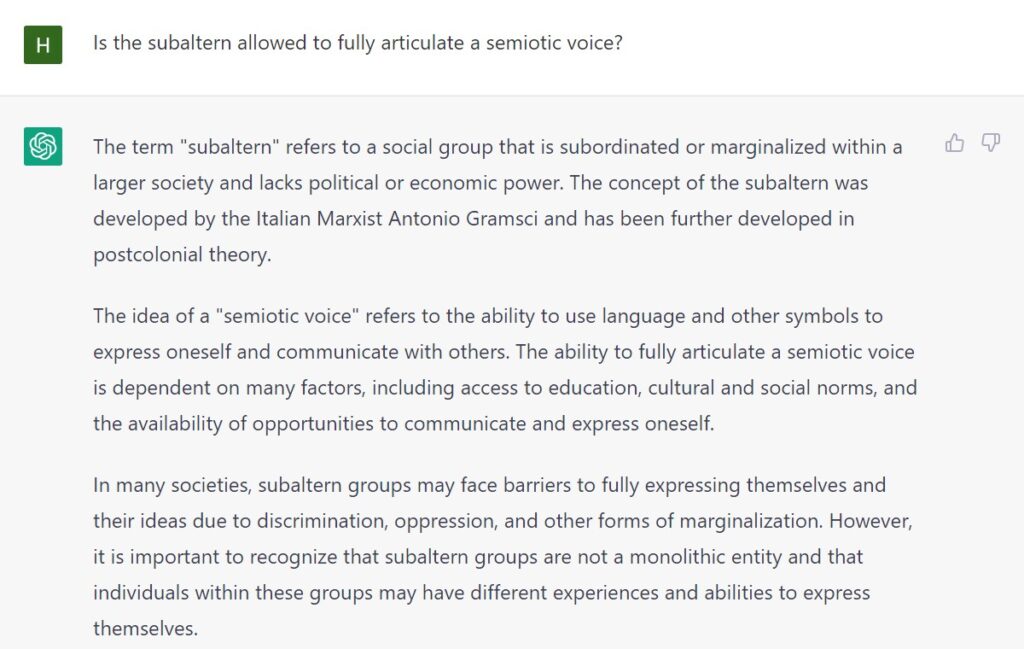2022 was a banner year for artificial intelligence technologies that reached the mainstream. After years of being frustrated with the likes of Alexa, Cortana, and Siri and the inability to understand the value of machine learning other than as a vague backend technology for the likes of Facebook and Google, 2022 brought us AI-based tools that was understandable at a consumer level. From our perspective, the most meaningful of these were two products created by OpenAI: DALL-E and ChatGPT, which expanded the concept of consumer AI from a simple search or networking capability to a more comprehensive and creative approach for translating sentiments and thoughts into outputs.
DALL-E (and its successor DALL-E 2) is a system that can create visual images based on text descriptions. The models behind DALL-E look at relationships between existing images and the text metadata that has been used to describe those images. Based on these titles and descriptions, DALL-E uses diffusion models to start with random pixels that lead to generated images based on these descriptions. This area of research is by no means unique to OpenAI, but it is novel to open up a creative tool such as DALL-E to the public. Although the outputs are often both interesting and surprisingly different from what one might have imagined, they are not without their issues. For instance, the discussion around the legal ownership of DALL-E created graphics is not clear, since Open AI claims to own the images used, but the images themselves are often based on other copyrighted images. One can imagine that, over time, an artistic sampling model may start to appear similar to the music industry where licensing contracts are used to manage the usage of copyrighted material. But this will require greater visibility regarding the lineage of AI-based content creation and the data used to support graphic diffusion. Until this significant legal question is solved, Amalgam Insights believes that the commercial usage of DALL-E will be challenging to manage. This is somewhat reminiscent of the challenges that Napster faced at the end of the 20th century as a technology that both transformed the music industry and had to deal with the challenges of a new digital frontier.
But the technology that has taken over the zeitgeist of technology users is ChatGPT and related use cases associated with the GPT (Generative Pre-Trained Transformer) autoregressive language model trained on 500 billion words across the web, Wikipedia, and books. And it has become the favorite plaything of many a technologist. What makes ChatGPT attractive is its ability to take requests from users asking questions with some level of subject matter specificity or formatting and to create responses in real-time. Here are a couple of examples from both a subject matter and creative perspective.
Example 1: Please provide a blueprint for bootstrapping a software startup.


This is a bit generic and lacks some important details on how to find funding or sell the product, but it is in line with what one might expect to see in a standard web article regarding how to build a software product. The ending of this answer shows how the autogenerative text is likely referring to prior web-based content built for search engine optimization and seeking to provide a polite conclusion based on junior high school lessons in writing the standard five-paragraph essay rather than a meaningful conclusion that provides insight. In short, it is basically a status quo average article with helpful information that should not be overlooked, but is not either comprehensive or particularly insightful for anyone who has ever actually started a business.
A second example of ChatGPT is in providing creative structural formats for relatively obscure topics. As you know, I’m an expert in technology expense management with over two decades of experience and one of the big issues I see is, of course, the lack of poetry associated with this amazing topic. So, again, let’s go to ChatGPT.
Example 2: Write a sonnet on the importance of reducing telecom expenses

As a poem, this is pretty good for something written in two seconds. But it’s not a sonnet, as sonnets are 14 lines, written in iambic pentameter (10 syllable lines split int 5 iambs, or a unstressed syllable followed by a stressed syllable) and split into three sections of four lines followed by a two-line section with a rhyme scheme of ABAB, CDCD, EFEF, GG. So, there’s a lot missing there.
So, based on these examples, how should ChatGPT be used? First, let’s look at what this content reflects. The content here represents the average web and text content that is associated with the topic. With 500 billion words in the GPT-3 corpus, there is a lot of context to show what should come next for a wide variety of topics. Initial concerns of GPT-3 have started with the challenges of answering questions for extremely specific topics that are outside of its training data. But let’s consider a topic I worked on in some detail back in my college days while using appropriate academic language in asking a version of Gayatri Spivak’s famous (in academic circles) question “Can the subaltern speak?”
Example 3: Is the subaltern allowed to fully articulate a semiotic voice?

Considering that the language and topic here is fairly specialized, the introductory assumptions are descriptive but not incisive. The answer struggles with the “semiotic voice” aspect of the question in discussing the ability and agency to use symbols from a cultural and societal perspective. Again, the text provides a feeling of context that is necessary, but not sufficient, to answer the question. The focus here is on providing a short summary that provides an introduction to the issue before taking the easy way out telling us what is “important to recognize” without really taking a stand. And, again, the conclusion sounds like something out of an antiseptic human resources manual in asking for the reader to consider “different experiences and abilities” rather than the actual question regarding the ability to use symbols, signs, and assumptions. This is probably enough of an analysis at a superficial level as the goal here isn’t to deeply explore postmodern semiotic theory but to test ChatGPT’s response in a specialized topic.
Based on these three examples, one should be careful in counting on ChatGPT to provide a comprehensive or definitive answer to a question. Realistically, we can expect ChatGPT will provide representative content for a topic based on what is on the web. The completeness and accuracy of a ChatGPT topic is going to be dependent on how often the topic has been covered online. The more complete an answer is, the more likely it is that this topic has already been covered in detail.
ChatGPT will provide a starting point for a topic and typically provide information that should be included to introduce the topic. Interestingly, this means that ChatGPT is significantly influenced by the preferences that have built online web text over the past decade of content explosion. The quality of ChatGPT outputs seems to be most impressive to those who treat writing as a factual exercise or content creation channel while those who look at writing as a channel to explore ideas may find it lacking for now based on its generalized model.
From a topical perspective, ChatGPT will probably have some basic context for whatever text is used in a query. It would be interesting to see the GPT-3 model augmented with specific subject matter texts that could prioritize up-to-date research, coding, policy, financial analysis, or other timely new content either as a product or training capability.
In addition, don’t expect ChatGPT to provide strong recommendations or guidance. The auto-completion that ChatGPT does is designed to show how everyone else has followed up on this topic. And, in general, people do not tend to take strong stances on web-based content or introductory articles.
Fundamentally, ChatGPT will do two things. First, it will make mediocre content ubiquitous. There is no need to hire people to write an “average” post for your website anymore as ChatGPT and other technologies either designed to compete with or augment it will be able to do this easily. If your skillset is to write grammatically sound articles with little to no subject matter experience or practical guidance, that skill is now obsolete as status quo and often-repeated content can now be created on command. This also means that there is a huge opportunity to combine ChatGPT with common queries and use cases to create new content on demand. However, in doing so, users will have to be very careful not to plagiarize content unknowingly. This is an area where, just like with DALL-E, OpenAI will have to work on figuring out data lineage, trademark and copyright infringement, and appropriation of credit to support commercial use cases. ChatGPT struggles with what are called “hallucinations” where ChatGPT makes up facts or sources because those words are physically close to the topic discussed in the various websites and books that ChatGPT uses. ChatGPT is a text generation tool that picks words based on how frequently they show up with other words. Sometimes that result will be extremely detailed and current and other times, it will look very generic and mix up related topics that are often discussed together.
Second, this tool now provides a much stronger starting point for writers seeking to say something new or different. If your point of view is something that ChatGPT can provide in two seconds, it is neither interesting or new. To stand out, you need to provide greater insight, better perspective, or stronger directional guidance. This is an opportunity to improve your skills or to determine where your professional skills lie. ChatGPT still struggles with timely analysis, directional guidance, practical recommendations beyond surface-level perspectives, and combining mathematical and textual analysis (i.e. doing word problems or math-related case studies or code review) so there is still an immense amount of opportunity for people to write better.
Ultimately, ChatGPT is a reflection of the history of written text creation, both analog and digital. Like all AI, ChatGPT provides a view of how questions were answered in the past and provides an aggregate composite based on auto-completion. For topics with a basic consensus, such as how to build a product, this tool will be an incredible time saver. For topics that may have multiple conflicting opinions, ChatGPT will try to play either both sides or all sides in a neutral manner. And for niche topics, ChatGPT will try to fake an answer at what is approximately a high school student’s understanding of the topic. Amalgam Insights recommends that all knowledge workers experiment with ChatGPT in their realm of expertise as this tool and the market of products that will be built based on the autogenerated text will play an important role in supporting the next generation of tech.
